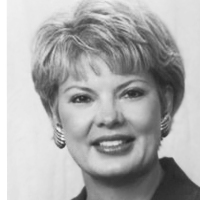This text-based course is a transcript of the webinar, Leadership and the Art of Influencing Others, presented by Ann Kummer, PhD, CCC-SLP. This course is presented in partnership with Cincinnati Children's Hospital.
Learning Objectives
After this course, readers will be able to:
- explain the importance of being able to influence others.
- describe the primary sources of power and the key characteristics of effective leaders.
- describe how to use effective communication strategies to influence others.
Introduction and Overview
Thank you for joining me in this discussion of Leadership and the Art of Influencing Others. Some of you may know me from my work with cleft palate and craniofacial anomalies. That's definitely my clinical passion, but I also have a passion about the topic of leadership and influence. It started when I got my first true leadership position at Cincinnati Children's Hospital Medical Center. When I arrived here about 40 years ago, soon after that I became the coordinator for speech language pathology. And then after that I became a clinical director. I am now a senior clinical director.
Back in the 1980s when I was working on my PhD, I was given the opportunity to take some courses as electives. One course that I took was called Leadership, which I thought was going to be a semi interesting course. Honestly, it was one of the most fascinating courses I've ever taken. You know sometimes when you are in a class and someone says something and you have this major “aha” moment. I felt like I had a lot of those “aha” moments in this leadership class. I learned a lot that has positively impacted my ability to lead others in my job. Additionally, it has affected the way that I interact with people in many other situations.
I believe that being able to influence others is a valuable skill. During this course, we will review definitions of key concepts, such as influence, power, leader and leadership, and discuss how these four concepts interact. Next, we will learn about the sources of influence and power, characteristics of effective leaders, and how to build effective sources of power. We will talk about balance in a relationship. Finally, we will discuss keys to negotiations, and getting what you want while helping others to get what they want.
In speech language pathology training, we are taught to be effective clinicians, but we are not often taught how to be leaders. I would suggest that the ability to be a leader and influence others as an SLP is an important skill to have. In clinical situations, we lead; we guide our patients and their family members. In supervisory situations, we lead and guide our employees and students. In professional situations, with colleagues and coworkers, we lead and guide on a daily basis.
Definitions
Let's define the following terms, which are all very much interrelated: influence, power, leader and leadership.
Influence
The following are all definitions of the word influence:
- The act or power of indirectly affecting a person or course of events, without apparent exertion of force.
- The power or capacity of causing an effect in indirect or intangible ways.
- The power to change or affect the way a person thinks or acts.
- The power to cause a change in the character, thought, or action of others.
Influence is considered to be morally neutral. It can be used in a positive way, or in a negative way, but it always involves a relationship and the result of that relationship. Obviously, influence is important for organizations because it helps to get employees to create behaviors to achieve the vision and the goals. Leaders can't achieve a vision and goals on their own. They have to work through others; to work through others, they have to be able to influence others to behave or act in a certain way.
Influence is important to those in the healthcare environment, because it helps to create patient and family compliance to recommendations. I would argue that in speech-language pathology, one of the hardest things that we have to do is achieve carry over. Sometimes when we work with a child or an adult, they can produce the skill that we are training them to do, but they don't use the skill. Why is it that they don't use the skill? It comes down to motor learning. They don't practice the skill. We can teach a skill, but in order for it to become automatic, and for the person to use that skill without conscious thought, they must continually practice that skill. In order for us to be successful in our job as SLPs, we have to influence the patients or the students, and their families. We have to convince them that practice is important. We need to have skills to make them understand, and buy into the fact that practice is going to be essential. That takes influence.
Influence is not a new term. In fact, the importance of influence was recognized in 1936 when Dale Carnegie first published his book titled “How to Win Friends and Influence People.” Interestingly, that was one of the first best-selling self-help books ever published. It sold over 30 million copies worldwide in its first printing. In 2011, it was ranked number 19 on Time Magazine's list of the 100 most influential books.

